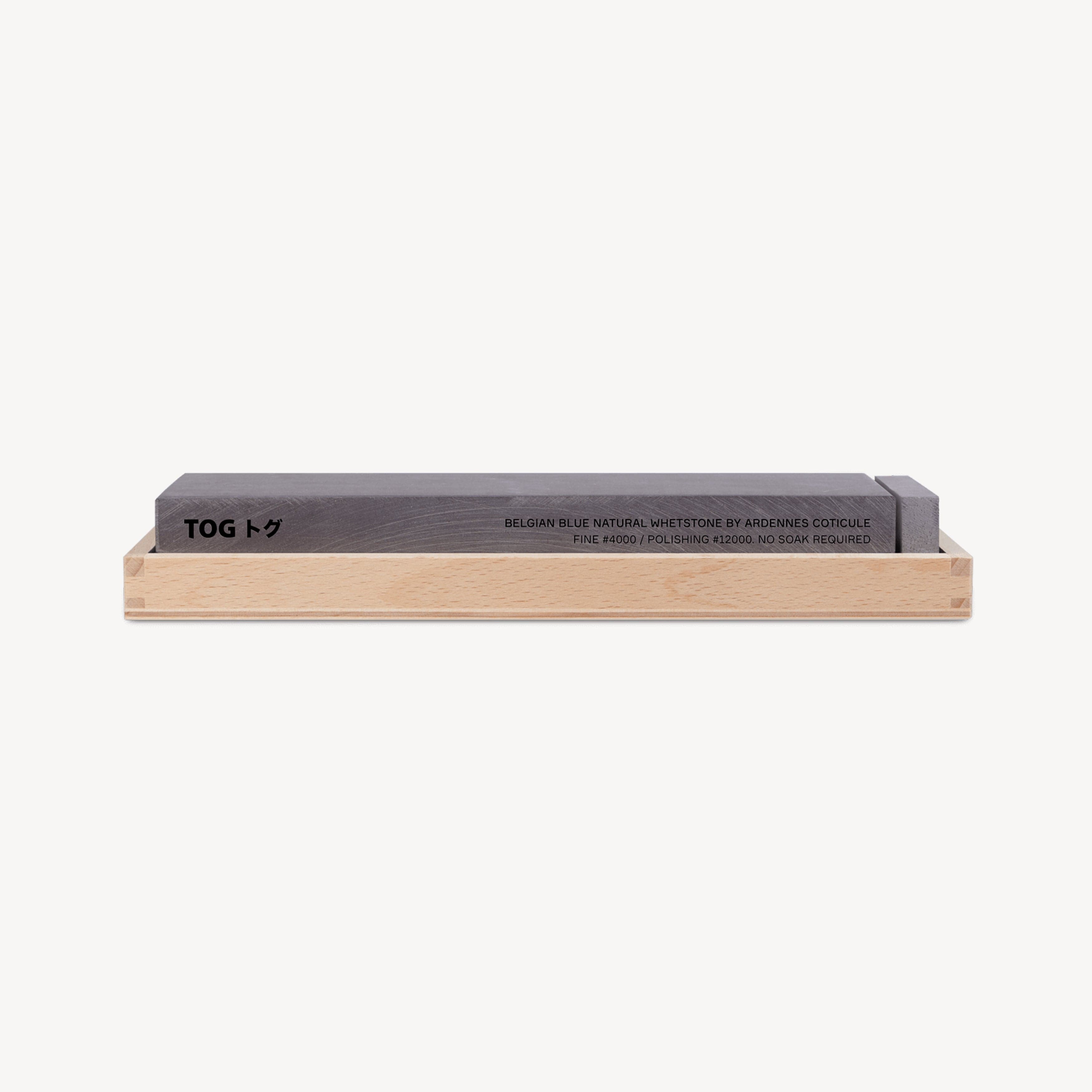

Belgian Blue
- Hand-made in Belgium
- Works as a strop (approx. #12000 grit)
- Gives a 'shaving sharp' edge
- Can be used with slurry as a fine whetstone (approx. #4000 grit)
- Worldwide delivery
In our opinion this is the best all-round finishing stone in the world. This full size version can get a kitchen knife sharper than any other method we've used. And we've used a lot.
Depending on your location either DPD, Royal Mail or Fed-Ex will deliver your order. We use DEVLND Fulfilment to ship our products, so this will appear on any messages from DPD, Royal Mail or Fed-EX - e.g. "Your parcel from DEVLND Fulfilment is due to be delivered today."
SHIPPING TIMES - UK MAINLAND
All age-restricted items will be sent via DPD Next Day. Non age-restricted items can be sent via Royal Mail 24hr or Royal Mail 48hr. Order by 12pm for next day.
Age ID will be required upon delivery of age-restricted items in addition to online age verification.
SHIPPING TIMES - OUTSIDE UK MAINLAND
Orders dispatched within 3 working days via LG or Fed-Ex with door-to-door tracking. Allow 10 days for delivery – time will vary depending on country and customs procedures.
14-day full satisfaction returns policy
Returning your product
- Email customerservices@togknives.com with your name, the product you are returning and the reason you are returning it.
- Package your product very securely. Knives must not pierce the packaging even if it is dropped. Ideally use the original packaging.
-
Post your products to:
Returns Department
TOG Knives Ltd.c/o DEVLND Ltd,
195 South Liberty Lane,
Bristol, BS3 2TN


Ardennes coticule
Belgian Blue whetstones are created from a 480 million year old sedimentary rock only found in one location in the world. A tonne of this rock is required to make each stone. These stones have been produced in Lierneux since 1625. Then with the advent of synthetic whetstones, production of natural stones declined. In 1982 the mine closed. By the 90's, however, there was an understanding that Belgian natural stones actually outperform synthetic ones. Maurice Celis and his son Rob re-opened the mine. Ardennes Coticule was formed.

TWO STONES IN ONE
The Belgian Blue consists of around 25% garnet crystals bonded with mica. The garnets are dodecahedron in shape, have a diameter of 5 to 15 microns. In a slurry they penetrate 1 to 3 microns into the metal to be sharpened, creating a #4000 grit edge. Their ideal geometric shape (obtuse angles polish the metal) and the large numbers of these garnets means the blade is sharpened very quickly and extremely finely. No other whetstone can match it.
With the slurry washed off, the embedded garnets stick up out of the surface by around half their diameter, or less. The shallower scratches produced by this finer surface are equivalent to approx. #12000 grit and replace the need for a leather strop.

A fine edge
For knives already sharpened with a medium stone, use the Belgian Blue to quickly create a fine edge of around #4000 grit. This is our recommended ideal edge – it is a little more durable than a #12000 edge due to having ‘microserrations’. TOG kitchen knives are supplied with a #3000 edge. There is no need to soak the Belgian Blue. Splash some water on the surface then rub the little slurry stone in circles to create a paste / slurry. This speeds up the process. The slurry contains garnets which do the sharpening. Do not use a honing rod afterwards.

STROPPING
To polish or “strop” your knife and produce the sharpest edge possible, wash the slurry off under the tap. Continue to sharpen on the clean Belgian Blue, but use lighter pressure to avoid creating a slurry. This will refine the edge further and produce a ‘shaving sharp’ edge.
Hold the knife at a couple of degrees greater angle than before to ensure you’re working the very furthest point of the cutting edge. Use 10 to 15 strokes on each side of the blade. The edge produced is perfect for sushi or wherever you wish to get the cleanest cut possible.
How to use

Video
This product has no reviews yet.

Used weekly on Saturday Kitchen Live BBC1

BEST CHEF’S KNIFE 2024, T3 PLATINUM AWARD

12 WAYS TO IMPROVE YOUR LIFE IN 2023

